Red caterpillars sometimes keep all types of predators away through coloring.
Vivid colors such as red are nature’s warning signs a species might seem dangerous to eat. Many red caterpillars are only red in their first growth stages, a period they’re likely to fall prey to predators.
Apart from red coloring, these caterpillars might also feed and live in groups in their initial growth stages, which reduces the chances of predators further.
Table of Contents
Are Red Caterpillars Poisonous?
Most red caterpillars aren’t poisonous. They can be unpalatable to predators, on the other hand.
Known for their capacity to absorb and retain plant toxins for life, many red caterpillars are highly distasteful to predators.
Birds and other predators eventually learn to avoid these species as they have a sour or bad taste.
As they grow, red caterpillars can change colors. Most times, they darken just before pupation.
Other species remain red or turn red towards later growth stages.
Goat Moth Caterpillars are known to have one of the longest lifespans among red caterpillars.
It can take up to 5 years for these caterpillars to pupate.
Red caterpillars are representative of both moths and butterflies.
Many of these species have a North American presence. They can be seen on various flowers, vines, trees, shrubs, and other types of plants.
Most of the following species are active in the warmer months, soon after the temperature increases in the spring.
Types of Red Caterpillars
1. Faithful Beauty Caterpillar
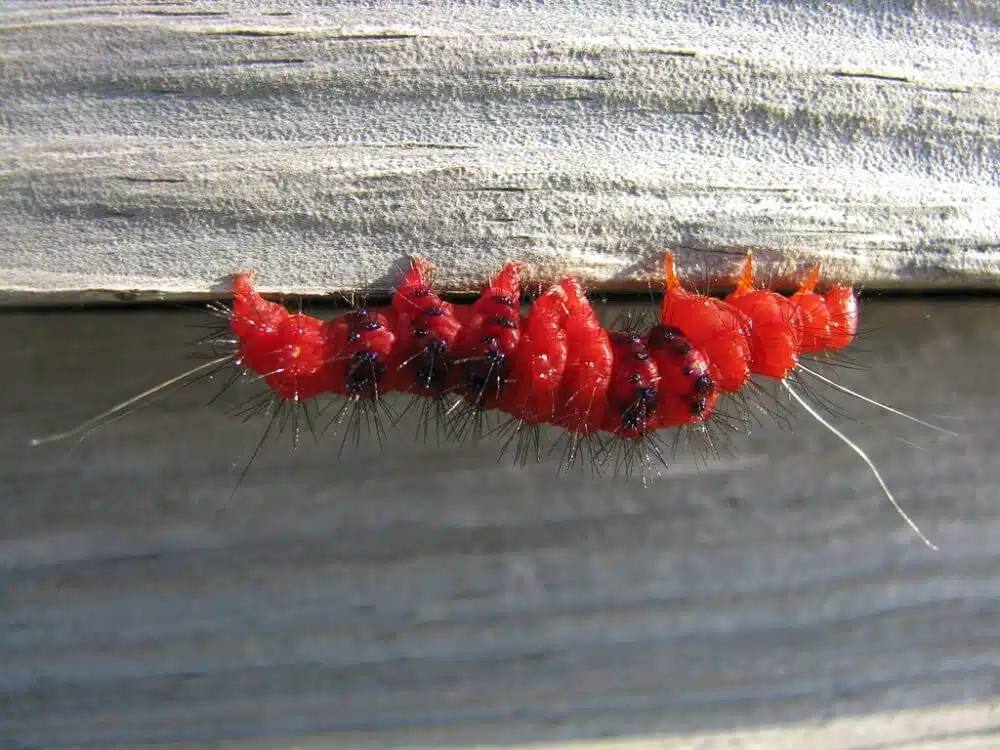
The Faithful Beauty Caterpillar (Composia fidelissima) is one of the most representative red caterpillars of North America.
This species is almost completely red with some red coloring also being seen on the diurnal adult moth.
Caterpillars of the Faithful Beauty family are known for having a red or rusty-red color.
A few black spots contrast the dorsal side of the species, together with scarce white hairs.
You can see this type of caterpillar on dogbane in Florida and the West Indies.
Once an adult, this species changes coloring to black and blue dominance with red being a tertiary color.
2. Pin-striped Vermilion Slug Moth Caterpillar
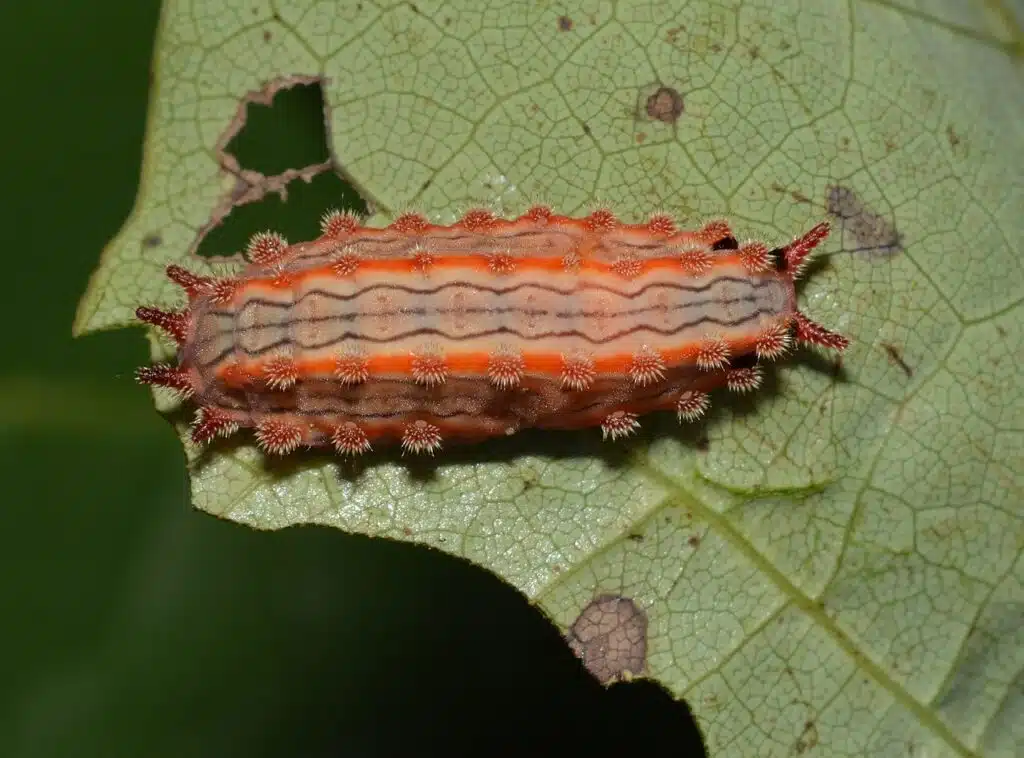
This species (Monoleuca semifascia) begins life as a mostly green caterpillar.
It slowly turns red-brown until there’s no more green coloring in the last growth stage before pupating.
Native to Southeastern US territories, this species can be seen in 2 broods in the South and one brood further North.
The role of the caterpillar impacts the ecosystem as it feeds on tree leaves.
Oaktree leaves tend to be preferred by Pin-striped Vermilion Slug Moth Caterpillar.
Pecan and cherry tree leaves are also commonly consumed by this species.
Once an adult, the moth changes colors to a brown-dominant nuance.
Its flight period vastly depends on the region as its season is shorter around New York compared to its longer Florida season.
3. Pipevine Swallowtail Caterpillar

Pipevines are the main plant host of the similarly-named Pipevine Swallowtail Caterpillars (Battus philenor).
This is a species that comes both in red and black colors, depending on its area.
Southern Pipevine Swallowtail Caterpillars are red while those in other regions of the US are black with tiny red dorsal dots.
The species tends to have destructive feeding habits as it feeds on the leaves of its host.
A single caterpillar can consume different plant hosts. It tends to eat all soft leaves of its host plant before moving to another one.
Caterpillars of this species tend to feed all day.
There aren’t too many predators of the Pipevine Swallowtail Caterpillar. This species is mostly at risk of parasites.
4. Splendid Royal Moth Caterpillar
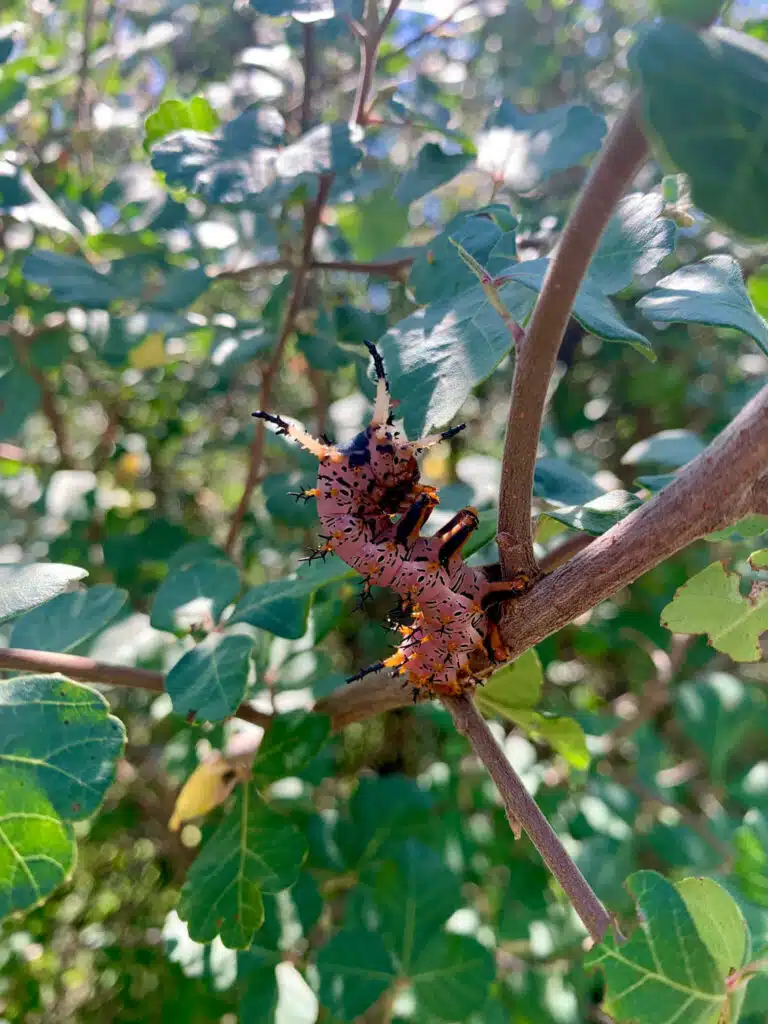
Arizona is one of the most common states of the Splendid Royal Moth Caterpillar (Citheronia splendens).
This is a moth species characterized by its red wings.
Caterpillars of the species move through different colors from one instar to another. A red-brown stage is specific to these caterpillars.
The colors of the caterpillar tend to darken as the species approaches pupation.
One of the main evolutionary goals of the caterpillar is to reach a dark color which would make it resemble bird droppings.
This keeps predators away.
Caterpillars of this genus aren’t pests as they don’t live on crops. They eat wild cotton leaves as well as plants such as those in the sumac or the manzanitas families.
5. Henry’s Elfin Caterpillar
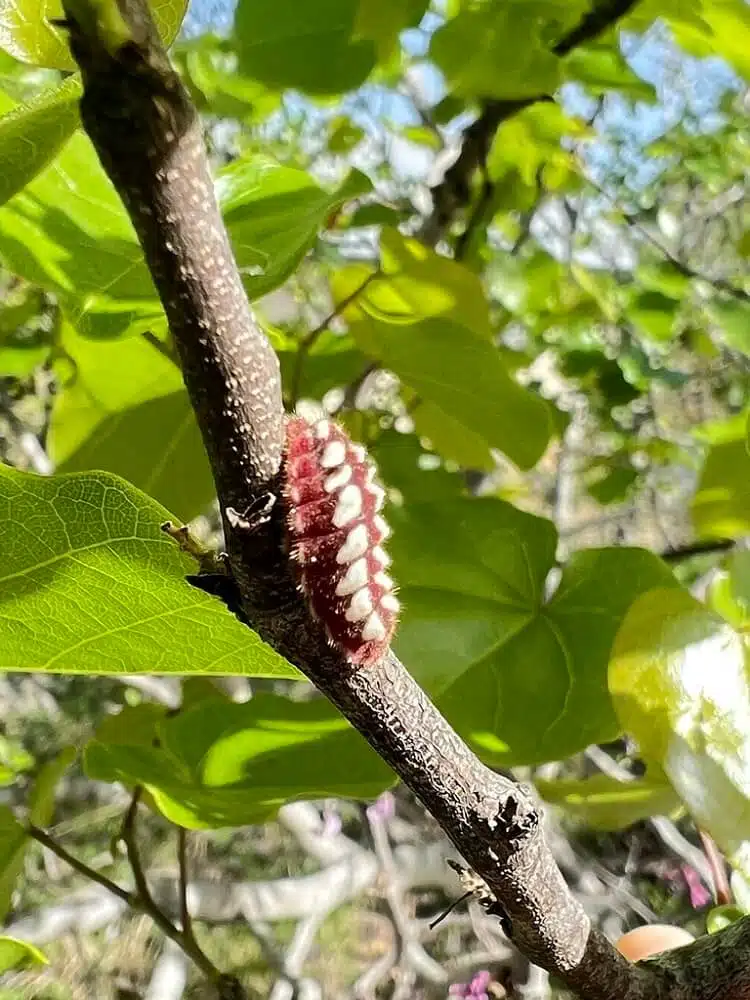
Henry’s Elfin Caterpillars (Callophrys henrici) are native to Eastern parts of the United States.
These caterpillars have a vivid red color with 2 rows of white dorsal dots.
Southern states tend to host the highest numbers of Henry’s Elfin Caterpillars.
Texas provides the ideal habitat for various specific Southern plants this caterpillar feeds on. Dahoon and redbud are common hosts of the caterpillar.
In other areas, this species might also be seen on blueberries and around woodlands.
This species is only seen in one brood per year. Caterpillars appear in the spring after overwintering in a pupal stage in dry leaves.
Once an adult, the species changes coloring completely to various shades of brown.
6. White-blotched Prominent Caterpillar
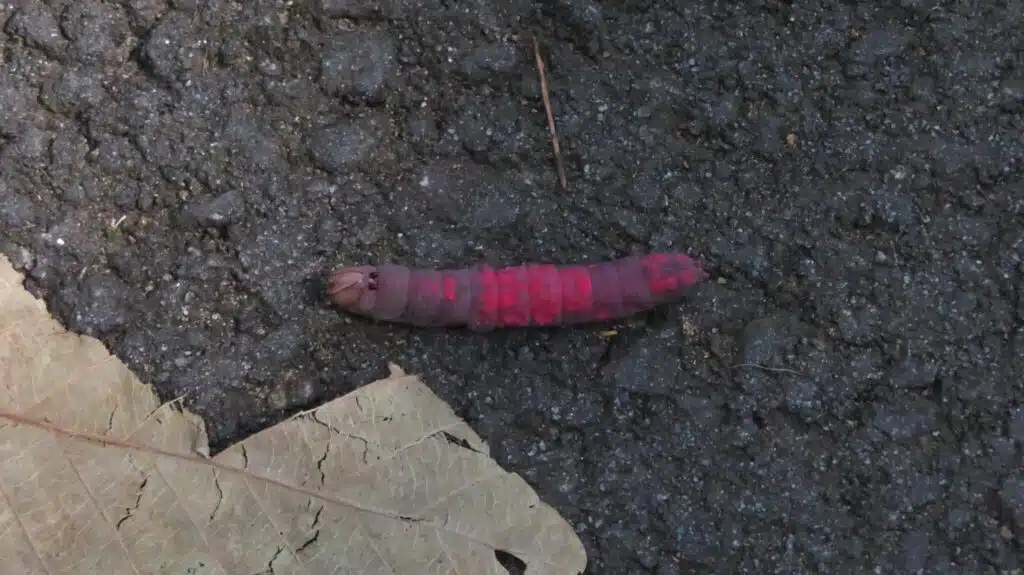
This type of caterpillar (Heterocampa umbrata) goes through various green, red, pink, and purple nuances until pupation.
Often easily spotted in its pink-red nuance, this caterpillar eventually turns multicolored for better camouflaging.
A large number of completely different colors from one instar to another makes this species a distinct type of moth caterpillar in the Eastern United States.
Multiple generations of these caterpillars are seen per year. Not many hosts outside oaks spark their interest.
You can sometimes spot these caterpillars in woodlands and on solitary oak trees in Southern states, where they have a higher presence.
Once adults, moths of this family are brown, white, and black.
They are spotted around light sources at night.
7. Stinging Rose Caterpillar
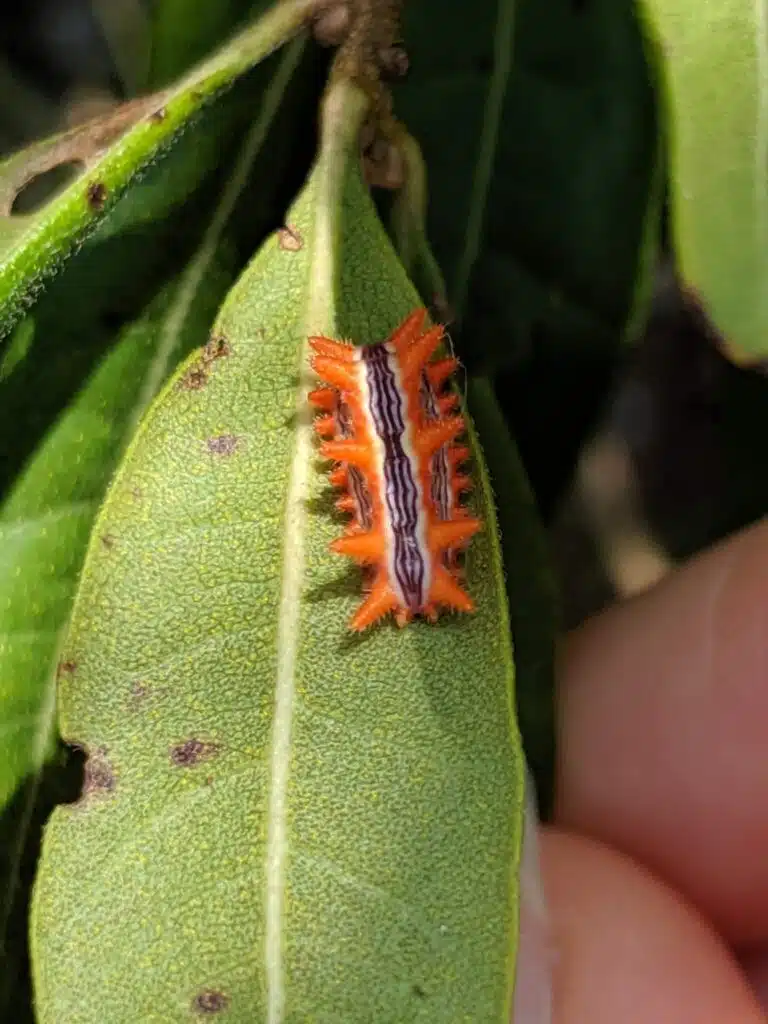
Stinging Rose Caterpillars (Parasa indetermina) also go through different colors from one growth stage to another.
They can be green, yellow, and red. A multicolored body with a red dorsal side and yellow spike-like formations can be spotted on the species as it grows.
This is one of the most multicolored species native to Eastern parts of North America.
Stinging Rose Caterpillars can sometimes be spotted on trees. These caterpillars need to hide on the underside of leaves as they stand out in front of potential predators.
Hardwood trees such as oak and maple provide the leaves these caterpillars feed on.
Rose bushes are also a common habitat for the species, together with fruit trees such as apple trees.
8. Drab Prominent Caterpillar
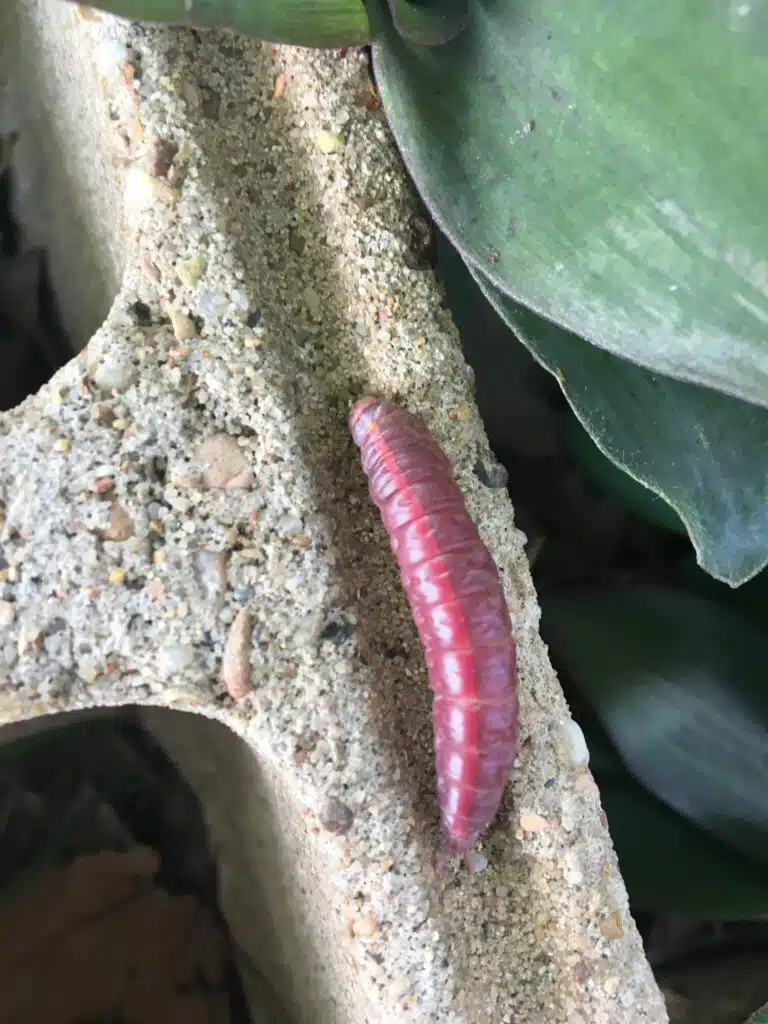
A North American native, the Drab Prominent Caterpillar (Misogada unicolor) is another species with considerable color changes in its instars.
It changes colors from green to red and then to red with pink dorsal stripes from one growth stage to another.
Caterpillars of the Drab Prominent moth are known for their capacity to only select young tree hosts.
They like feeding on poplar tree leaves.
Drab Prominent Caterpillars only eat the soft parts of the leaves, making sure to leave the thick veins behind.
In the right conditions of food abundance, these caterpillars may reach a size of up to 42mm.
Vivid coloring is lost once the adult moth emerges from the pupa. The adult moths are mostly brown.
9. Cactus Moth Caterpillar

Cactus Moths (Cactoblastis cactorum) are an introduced species in North America. This family of moths is seen especially in Florida.
Its larvae have an orange-red color with black stripes and it changes coloring completely until it matures.
Larvae of the species grow inside cacti, which it uses for food.
The role of the species is both beneficial and detrimental to the ecosystem.
While these caterpillars can reduce the number of invasive cacti, they can also reduce the number of good edible cacti or even endangered cacti.
Opuntia cacti control has been one of the reasons this species was introduced in various countries.
The bright colors of the caterpillars turn into brown and black colors on the adult moth.
10. Atala Caterpillar

Atala Caterpillars (Eumaeus atala) are only found in extreme Southern Florida and Cuba. This is a species that has adapted to absorbing toxins from host plants as a defense mechanism.
Atala caterpillars have bright red coloring, a first warning sign for their predators.
It lives on both native and introduced species of palm such as arrowhead.
This type of palm has a reduced number of toxins that the caterpillars stores in its body and which remain there for potential predators to find them unpalatable.
Storing the toxins is essential even for the emerged adult, known for its slow flight and otherwise defenseless nature in front of predators.
The red coloring of the caterpillar is also transmitted to the adult Atala butterfly. This species has a red lower body and red spots on the wings.
11. Walnut Caterpillar

Walnut caterpillars (Datana integerrima) go through different colors as they grow.
They first have a red or red-brown color to eventually become almost completely black with long dense white hairs.
As the name of the species implies, these types of caterpillars use walnut trees as hosts.
Their role is detrimental and they need to be eliminated for the walnut tree to survive.
Young trees are preferred by the species but both young and aged trees might be killed within 2 years in case of invasions.
Insecticide proves highly efficient when it comes to killing these caterpillars and other eggs of the species.
Taking action fast comes with better results as caterpillars may become resilient as they grow.
12. Oslar’s Oakworm
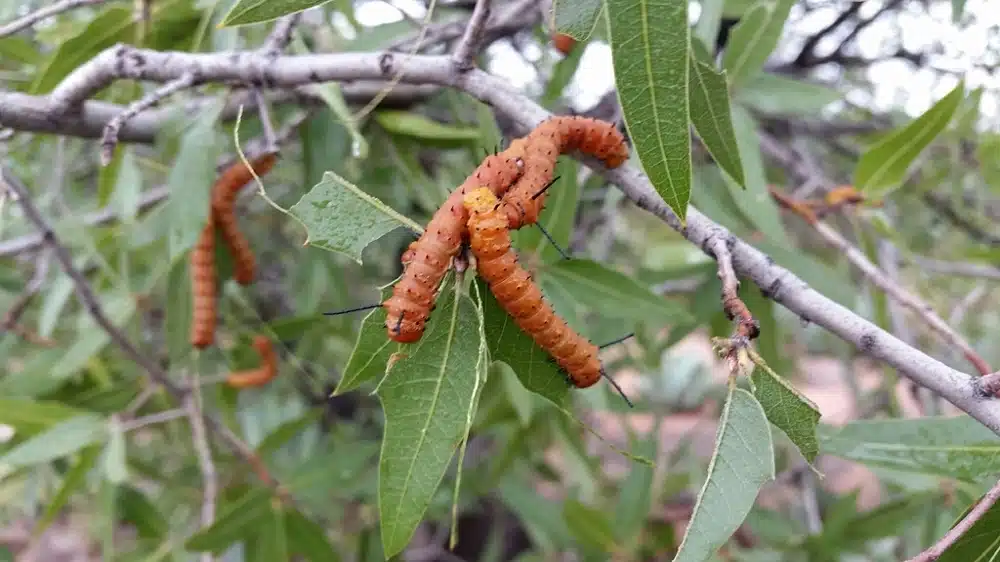
This species of caterpillars (Anisota oslari) are also found on hardwood trees such as those in the oak group.
Mexican oak is among the impacted species, a tree found in Texas and Arizona.
A red or red-brown color is specific to these caterpillars as they grow.
They are initially seen feeding in groups.
As a result, the most impact the species has on oak tree foliage is when these caterpillars are in their first instars.
They break out to solitary feeding in their late growth stages.
The damages of these species are considerable and they should be eliminated from their hosts when possible.
Constant feeding is an attribute of the species as adult moths don’t eat.
Oslar’s Oakworm Moths also have different yellow-brown coloring as adults.
13. Clear Dagger Caterpillar
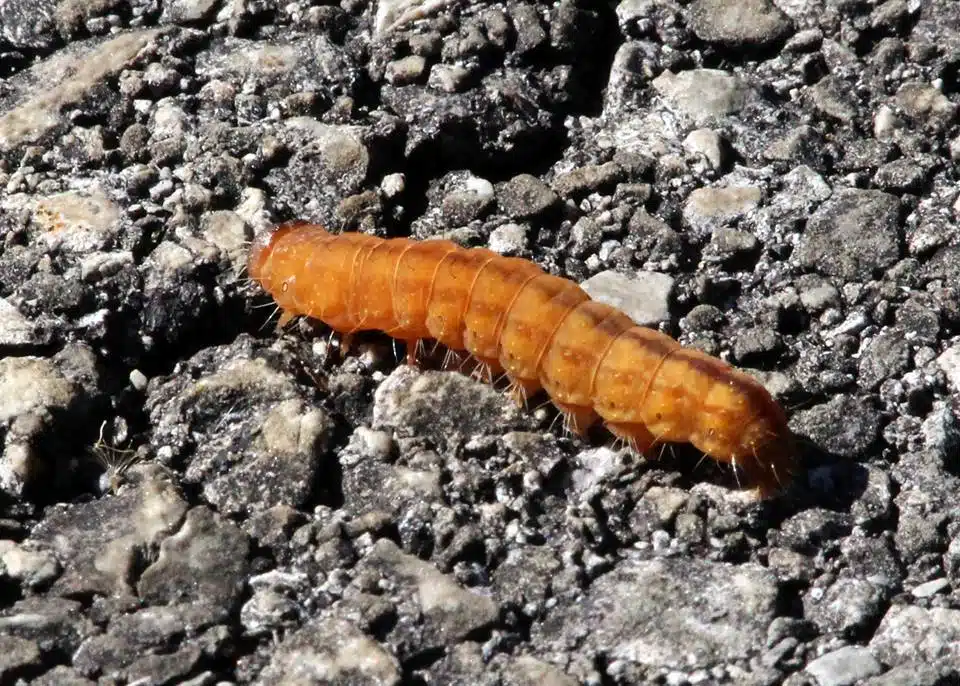
This species of caterpillar (Acronicta clarescens) is native to North America.
It has a red-brown color which is constant through its growth stages. This color darkens towards the later instars but it remains red-brown.
The pupa of the species is also red-brown.
Emerged moths have a molted gray color and are seen flying during the summer months.
Clear Dagger Caterpillars are a minor pest of various host trees.
These caterpillars feed on ash, apple, and cherry tree leaves.
The health impact on these trees tends to be minor.
14. Goat Moth Caterpillar

Goat Moth Caterpillars (Cossus cossus) are given a name inspired by their smell which resembles the smell of goats.
These are some of the most damaging caterpillars as they live and feed on live trees.
It can take years for the caterpillar to pupate, an interval in which deciduous host trees are severely impacted by the species.
Goat Moth Caterpillar tree infestations can be spotted by the sap which exists in the tunnels and holes in trees.
These excrements tend to attract flies, moths, and butterflies.
Goat Moth Caterpillars are rarely seen outside tree trunks. They have a red color with yellow or orange nuances on the sides.
15. Polydamas Swallowtail Caterpillar
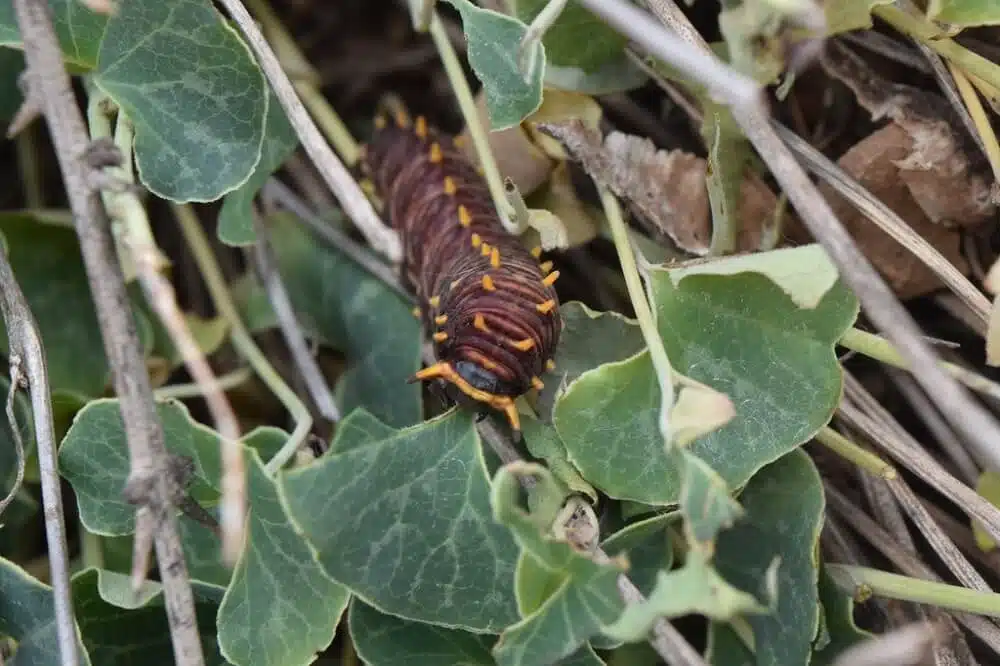
This species of caterpillar (Battus polydamas) has a dark red color which darkens as it grows. Orange to red tubercles is also spotted on this species.
Polydamas Swallowtail Caterpillars are among the species that may reach a size larger than 2 inches in the last instar.
This is a species known to exclusively feed on pipevines, also known as birthwort.
Plants of this genus have been used in Ancient Egypt to aid the natural healing process of childbirth, which inspires their name.
Aristolochic acids are absorbed by the body of Polydamas Swallowtail Caterpillars which makes them distasteful to their natural predators.